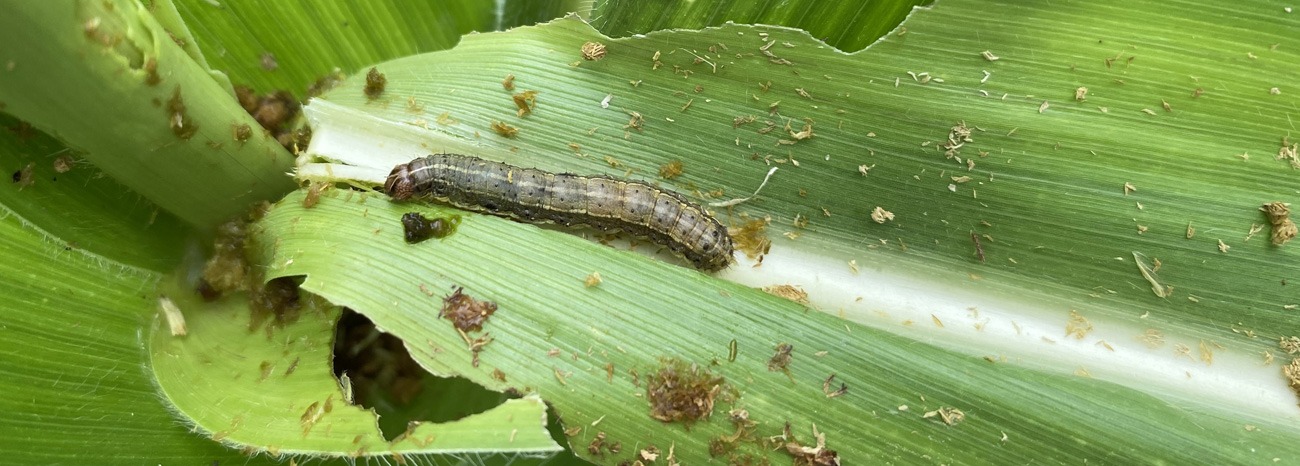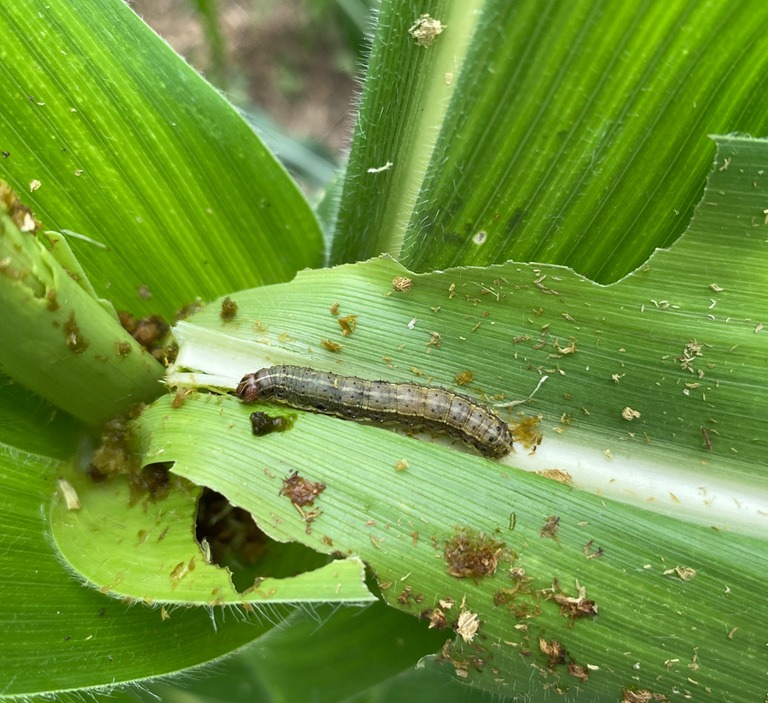If your lawn is usually lush and green but lately has been looking brown, it may not be from the excessive heat. If your lawn also looks almost like it’s been chewed up, you could be dealing with army worms. Unfortunately, these fast-moving pests can devastate a healthy yard in just days if you don’t recognize the damage and act quickly.
But there is good news. If you catch army worms early, you can stop them in their tracks. And we’re here to walk you through exactly how to identify army worms, how to get rid of them and how to keep them from coming back.
What Are Army Worms?
“Army worms” aren’t worms at all. They’re actually the caterpillar (larval) stage of certain moth species. In our area it’s usually the fall army worm or the true army worm. The adult moths lay clusters of eggs on grass or plants. When the eggs hatch, small caterpillars — about an inch or so long — begin feeding aggressively on your turf.
The challenge is, they grow fast. In just a few days, those tiny larvae become big, hungry caterpillars that can strip large patches of lawn. Once mature, they pupate in the soil and emerge as adult moths to begin the cycle again. That’s why multiple generations can attack the same yard in one season.
How to Spot Army Worm Damage
Army worms don’t nibble at your grass, they march through your yard with a vengeance with damage that can seem to appear almost overnight.
Here are a few telltale signs:
- Grass blades that look chewed or “windowed” almost like tiny panes of glass were removed.
- Brown, ragged patches that seem to spread rapidly across your lawn.
- Visible “march lines.” You might actually see the caterpillars crawling in a line across your yard.
To confirm whether you’re dealing with army worms, try this quick test: mix a couple of tablespoons of dish soap with a gallon of water and pour it over a small area of grass. If army worms are present, they’ll wriggle up to the surface within a few minutes. You can also head out in the evening with a flashlight since army worms do much of their feeding at night.
The Best Ways to Get Rid of Army Worms
If you’ve found army worms, don’t panic. But you do need to take action quickly. A fast response can make the difference between a minor issue and a lawn that needs serious repair.
Here are some of the most effective treatment options:
Organic & Low-Impact Solutions
More homeowners have started to prefer eco-friendly lawn care methods. Thankfully there are excellent options for controlling army worms without using heavy chemicals, including:
- Beneficial nematodes: these are tiny, soil-dwelling organisms that attack the larvae.
- Bacillus thuringiensis (Bt): this is a naturally occurring bacteria that targets caterpillars but is harmless to people and pets.
- Spinosad: a bio-derived treatment that works well on younger larvae.
These organic methods are most effective on young, small caterpillars so be on the lookout during their most active months (in our area that’s usually late summer through early fall).
Synthetic Insecticides
Synthetic insecticides are products with active ingredients like bifenthrin, lambda-cyhalothrin or carbaryl and they get to work quickly. Make sure you follow all instructions carefully and use protective gear when applying. Your lawn will be safe for children and pets as soon as the treatment has dried.
Spot Treatment vs. Full-Lawn Treatment
How do you decide whether to treat just part of your lawn or the whole thing?
If you’re seeing more than 3 or 4 larvae per square foot in multiple areas of your property, it’s smart to treat the whole yard. If the damage is concentrated to a small area, spot treatment may be enough.
Whichever method you choose, take care when applying treatments near gardens or vegetable beds.
How to Help Your Lawn Recover
Once you’ve eliminated the army worms, your grass may need some TLC to bounce back. Starting with a strong, healthy lawn is your best defense. Here’s how you can get there:
- Water your lawn deeply but infrequently to encourage root growth.
- Apply fertilizer to stimulate healthy new shoots.
- Overseeding any bare or thin patches of your lawn.
- Keep an eye out for any lingering larvae or signs of renewed activity.
Regular maintenance, proper mowing height, and soil care can make it much harder for pests to take hold in the future.
Can You Prevent Army Worms from Returning?
You can lower your odds of a repeat army worm invasion by introducing these practices:
- Encourage natural predators, like birds and beneficial insects, by providing a habitat for them. Also, encourage their presence by avoiding using broad-spectrum insecticides.
- Keep your lawn healthy with consistent aeration, dethatching, balanced fertilization, and appropriate watering.
- Stay vigilant late summer into fall (peak army worm season) so you can catch any potential return before they take hold.
Why Choose Moyer for Professional Help?
Army worms can do major damage in just a few days, which is why timing is everything. If you don’t want to take chances with your lawn, let us help.
Our lawn experts are here for you with professional scouting, targeted treatments and season-long protection so your grass stays healthy and green.
We offer:
- Professional pest ID: no guesswork, just expert answers.
- Rapid-response treatments: often the same day you call.
- Tailored lawn care plans, like our Total Green Lawn Care program, that build long-term health and resilience to prevent army worms and other damaging pests.
- Ongoing scouting and service to prevent future outbreaks.
Our friendly, professional team can help you stop the damage fast and restore your lawn to its best. Call 215.799.2016 or visit emoyer.com.
Frequently Asked Questions
Q: When are army worms most active in our area?
A: Army worms are most common in late summer and early fall, though some seasons bring earlier activity depending on weather patterns.
Q: How are army worms different from cutworms or sod webworms?
A: Army worms feed in large groups and march across turf, causing widespread, patchy damage. Cutworms are solitary and tend to chew at the base of individual plants, while sod webworms create silken tunnels in the thatch layer of the lawn.
Q: Are treatments safe for kids and pets?
A: Most lawn insecticides are safe once dry, but always check the label and follow safety recommendations.
Q: Can army worms damage garden plants?
A: Their primary target is turfgrass, but they can sometimes feed on nearby ornamentals or veggies if grass is scarce.
Q: Does dethatching or aeration help prevent army worms?
A: While these practices improve lawn health overall, they won’t prevent army worms by themselves. Regular monitoring during active months is the best way to prevent army worms.

